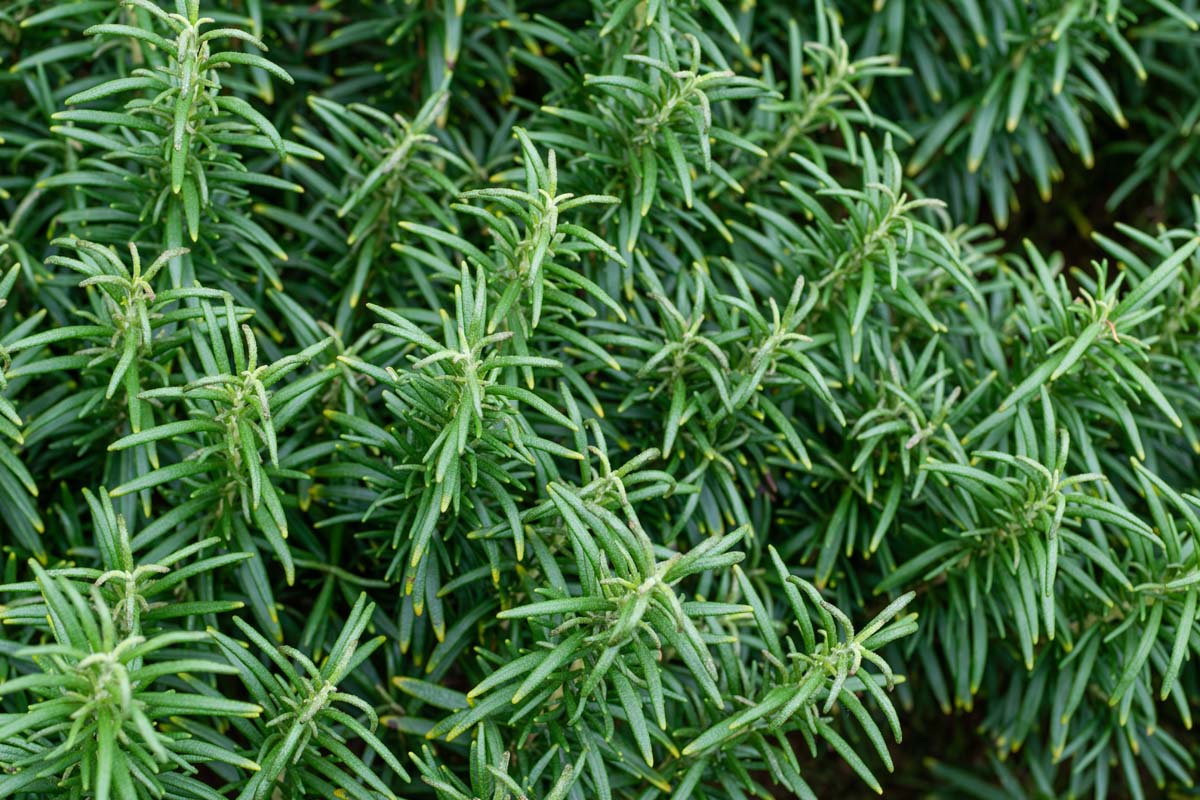Home>Gardening News and Trends>Latest News>What Does Rosemary Symbolize In Hamlet


Latest News
What Does Rosemary Symbolize In Hamlet
Published: January 31, 2024
Discover the latest news on the symbolism of rosemary in Hamlet. Uncover the significance and interpretation of this powerful literary motif. Gain valuable insights and analysis here.
(Many of the links in this article redirect to a specific reviewed product. Your purchase of these products through affiliate links helps to generate commission for Chicagolandgardening.com, at no extra cost. Learn more)
Table of Contents
Introduction
William Shakespeare’s timeless tragedy, Hamlet, is a literary masterpiece that intricately weaves symbolism into its narrative. Among the various symbols employed in the play, rosemary holds a significant place, representing themes of remembrance and protection. This aromatic herb, with its rich cultural and historical connotations, serves as a potent symbol that adds depth and complexity to the characters and their motivations. By exploring the symbolism of rosemary in Hamlet, we gain insight into the profound layers of meaning embedded in Shakespeare’s work.
Throughout the play, rosemary emerges as a multifaceted symbol, embodying the characters’ yearning for remembrance and safeguarding against malevolent forces. Its presence underscores the emotional and psychological landscapes of the characters, enriching the overall thematic tapestry of the tragedy. As we delve into the symbolism of rosemary in Hamlet, we unravel the intricate threads of memory, protection, and superstition that contribute to the play’s enduring resonance.
The Symbolism of Rosemary in Hamlet
In Hamlet, rosemary serves as a powerful symbol that transcends its botanical identity, embodying profound thematic significance. The herb’s symbolism is deeply rooted in cultural and historical contexts, enriching the play’s narrative with layers of meaning.
Rosemary symbolizes remembrance, evoking the enduring nature of memory and its impact on the characters’ actions and motivations. Its aromatic presence pervades the play, serving as a poignant reminder of the characters’ longing to honor and preserve the memory of the departed. The symbolism of remembrance encapsulated by rosemary resonates with Hamlet’s internal struggle to seek justice for his father’s murder while grappling with the weight of familial legacy and honor.
Furthermore, rosemary embodies the theme of protection, offering a symbolic shield against malevolent forces. Within the context of Hamlet, the herb’s protective symbolism is intricately woven into the characters’ fears and vulnerabilities, reflecting their collective desire to safeguard themselves against the pervasive atmosphere of deceit and treachery.
As a symbol of protection, rosemary underscores the characters’ yearning for security and stability in a world fraught with political turmoil and moral ambiguity. Its presence serves as a potent emblem of the characters’ quest for emotional and psychological shelter amid the tumultuous events unfolding within the play.
Rosemary as a Symbol of Remembrance
Within the context of Hamlet, rosemary emerges as a poignant symbol of remembrance, encapsulating the enduring nature of memory and its profound impact on the characters’ lives. The herb’s symbolic resonance extends beyond its aromatic presence, weaving a thematic thread that enriches the play’s narrative with emotional depth and introspection.
Rosemary’s association with remembrance is intricately linked to the characters’ collective yearning to honor and preserve the memory of the departed. In the midst of familial strife and political intrigue, the herb serves as a tangible reminder of the characters’ deep-rooted connections to their ancestral legacies and the weight of familial expectations.
Hamlet’s contemplative soliloquies and introspective musings underscore the thematic significance of rosemary as a symbol of remembrance. The herb becomes a poignant motif that mirrors Hamlet’s internal struggle to reconcile the demands of avenging his father’s murder with the burden of preserving his father’s legacy and honor. As he grapples with the complexities of filial duty and moral responsibility, rosemary’s symbolic presence underscores the enduring nature of familial memory and its indelible influence on Hamlet’s actions.
Furthermore, Ophelia’s poignant association with rosemary as she laments the tragic loss of her father amplifies the herb’s symbolic resonance as a potent emblem of remembrance. Her poignant invocation of rosemary as a symbol of enduring memory reflects the characters’ collective yearning to immortalize the essence of their loved ones, transcending the boundaries of mortality through the enduring power of remembrance.
Ultimately, rosemary’s symbolism as a representation of remembrance enriches the thematic tapestry of Hamlet, imbuing the play with a profound meditation on the enduring legacy of memory and its transformative influence on the characters’ emotional and psychological landscapes.
Rosemary as a Symbol of Protection
Amid the intricate tapestry of symbolism in Hamlet, rosemary emerges as a potent symbol of protection, weaving a thematic thread that underscores the characters’ collective yearning for security and resilience in the face of adversity. The herb’s symbolic resonance as a protective emblem enriches the play’s narrative with layers of meaning, reflecting the characters’ inherent desires to shield themselves from malevolent forces and emotional turmoil.
Rosemary’s association with protection is deeply intertwined with the characters’ vulnerabilities and fears, serving as a symbolic shield against the pervasive atmosphere of deceit and treachery. The herb’s aromatic presence becomes a tangible representation of the characters’ quest for emotional and psychological fortitude amid the tumultuous events unfolding within the play.
Furthermore, rosemary’s protective symbolism is intricately linked to the characters’ yearning for stability and resilience in a world rife with political turmoil and moral ambiguity. Its presence serves as a potent emblem of the characters’ collective desire to fortify themselves against the uncertainties and dangers that permeate their tumultuous reality.
Hamlet’s introspective journey, fraught with existential angst and moral dilemmas, underscores the thematic significance of rosemary as a symbol of protection. The herb becomes a poignant motif that mirrors Hamlet’s inner turmoil and his quest for psychological shelter amidst the complexities of vengeance and moral reckoning. In this context, rosemary’s protective symbolism reflects the characters’ enduring resilience in the face of adversity, encapsulating their unwavering determination to navigate the treacherous currents of political intrigue and personal tribulations.
Ultimately, rosemary’s symbolism as a representation of protection enriches the thematic fabric of Hamlet, offering a profound meditation on the characters’ collective yearning for emotional and psychological fortitude in a world fraught with uncertainty and moral peril.
The Use of Rosemary in Hamlet
William Shakespeare strategically employs the symbolism of rosemary throughout Hamlet, infusing the play with layers of thematic richness and emotional resonance. The herb’s multifaceted symbolism as a representation of remembrance and protection is intricately woven into the fabric of the narrative, offering profound insights into the characters’ motivations and the overarching themes of the play.
Rosemary’s symbolic presence is notably exemplified in Ophelia’s poignant speech as she distributes symbolic herbs, including rosemary, rue, and pansies, while expressing her emotional turmoil. This evocative use of rosemary underscores the herb’s association with remembrance and enduring memory, as Ophelia grapples with the weight of her father’s tragic demise and the complexities of grief.
Furthermore, the thematic resonance of rosemary as a symbol of protection is poignantly manifested in the characters’ yearning for emotional and psychological fortitude amid the tumultuous events unfolding within the play. The herb’s symbolic significance becomes intertwined with the characters’ vulnerabilities and their collective quest for resilience in the face of adversity, reflecting their unwavering determination to navigate treacherous political intrigues and personal tribulations.
Hamlet’s introspective musings and soliloquies further underscore the thematic significance of rosemary, as the herb becomes a poignant motif that mirrors his internal struggle to reconcile the demands of avenging his father’s murder with the burden of preserving familial honor and legacy. In this context, rosemary’s symbolic resonance encapsulates the enduring nature of memory and its transformative influence on Hamlet’s actions, adding layers of emotional depth to his character.
Shakespeare’s deliberate use of rosemary as a pervasive symbol throughout Hamlet underscores the herb’s profound thematic resonance, offering nuanced insights into the characters’ emotional and psychological landscapes. The herb’s multifaceted symbolism enriches the play’s narrative with layers of meaning, reflecting the enduring legacy of memory and the characters’ collective yearning for protection and resilience amid the complexities of human experience.
Conclusion
The symbolism of rosemary in Hamlet transcends its botanical identity, serving as a potent emblem of remembrance and protection that enriches the play’s narrative with profound thematic resonance. Through the evocative use of rosemary, Shakespeare deftly weaves a thematic tapestry that reflects the characters’ yearning for enduring memory and emotional fortitude in the face of adversity.
Rosemary’s association with remembrance underscores the enduring nature of memory and its transformative influence on the characters’ actions and motivations. The herb becomes a poignant symbol that mirrors Hamlet’s internal struggle to seek justice for his father’s murder while grappling with the weight of familial legacy and honor. Additionally, Ophelia’s poignant association with rosemary amplifies the herb’s symbolic resonance as a potent emblem of enduring memory, reflecting the characters’ collective yearning to immortalize the essence of their loved ones.
Furthermore, rosemary’s symbolism as a representation of protection embodies the characters’ quest for emotional and psychological fortitude amid the tumultuous events unfolding within the play. The herb becomes a tangible representation of the characters’ unwavering determination to navigate treacherous political intrigues and personal tribulations, reflecting their inherent desires to shield themselves from malevolent forces and emotional turmoil.
Shakespeare’s deliberate use of rosemary as a pervasive symbol throughout Hamlet underscores the herb’s profound thematic resonance, offering nuanced insights into the characters’ emotional and psychological landscapes. The herb’s multifaceted symbolism enriches the play’s narrative with layers of meaning, reflecting the enduring legacy of memory and the characters’ collective yearning for protection and resilience amid the complexities of human experience.
In essence, the symbolism of rosemary in Hamlet serves as a testament to Shakespeare’s masterful storytelling, infusing the play with timeless themes of memory, protection, and the enduring resilience of the human spirit.









